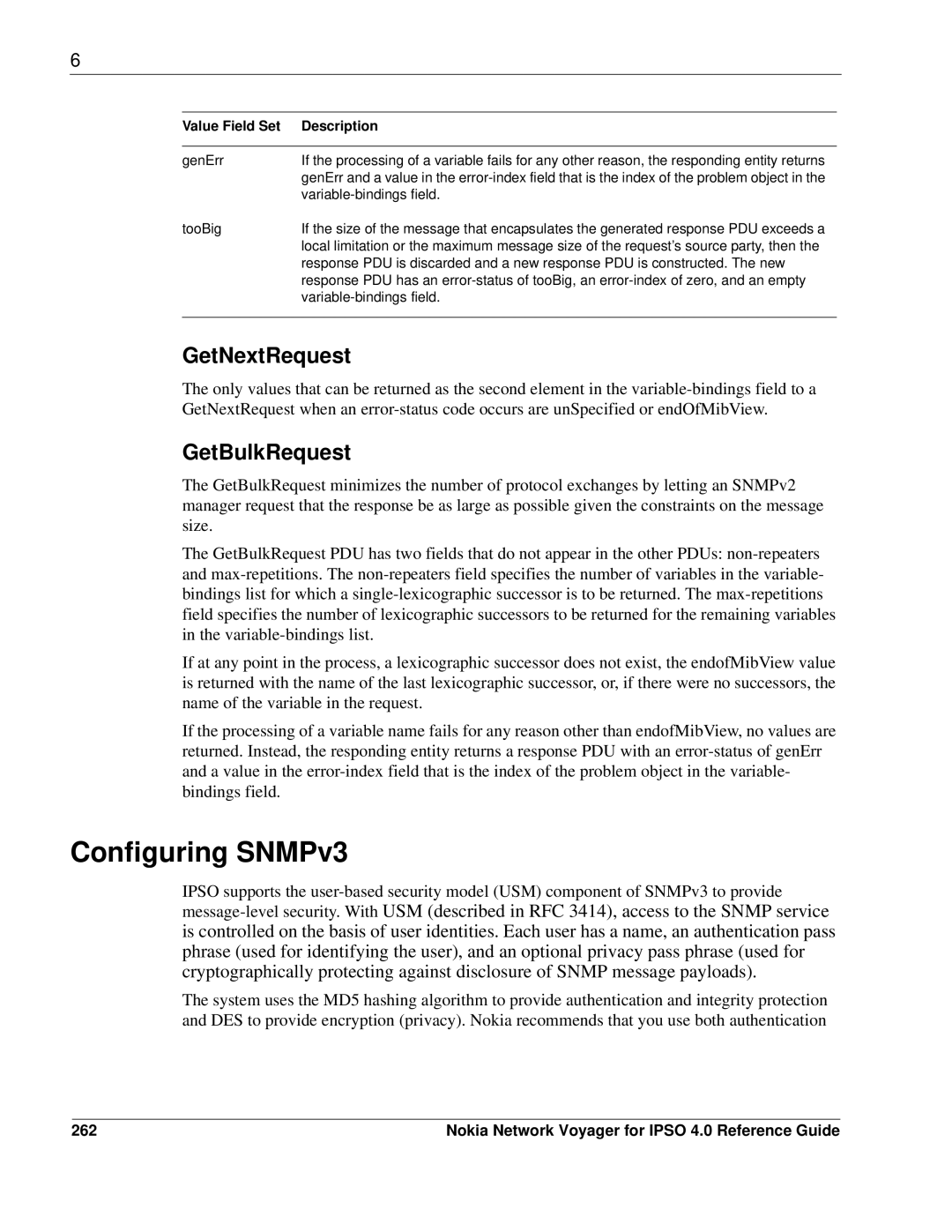
6
Value Field Set | Description |
|
|
genErr | If the processing of a variable fails for any other reason, the responding entity returns |
| genErr and a value in the |
| |
tooBig | If the size of the message that encapsulates the generated response PDU exceeds a |
| local limitation or the maximum message size of the request’s source party, then the |
| response PDU is discarded and a new response PDU is constructed. The new |
| response PDU has an |
| |
|
|
GetNextRequest
The only values that can be returned as the second element in the
GetBulkRequest
The GetBulkRequest minimizes the number of protocol exchanges by letting an SNMPv2 manager request that the response be as large as possible given the constraints on the message size.
The GetBulkRequest PDU has two fields that do not appear in the other PDUs:
If at any point in the process, a lexicographic successor does not exist, the endofMibView value is returned with the name of the last lexicographic successor, or, if there were no successors, the name of the variable in the request.
If the processing of a variable name fails for any reason other than endofMibView, no values are returned. Instead, the responding entity returns a response PDU with an
Configuring SNMPv3
IPSO supports the
The system uses the MD5 hashing algorithm to provide authentication and integrity protection and DES to provide encryption (privacy). Nokia recommends that you use both authentication
262 | Nokia Network Voyager for IPSO 4.0 Reference Guide |
